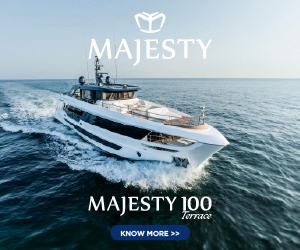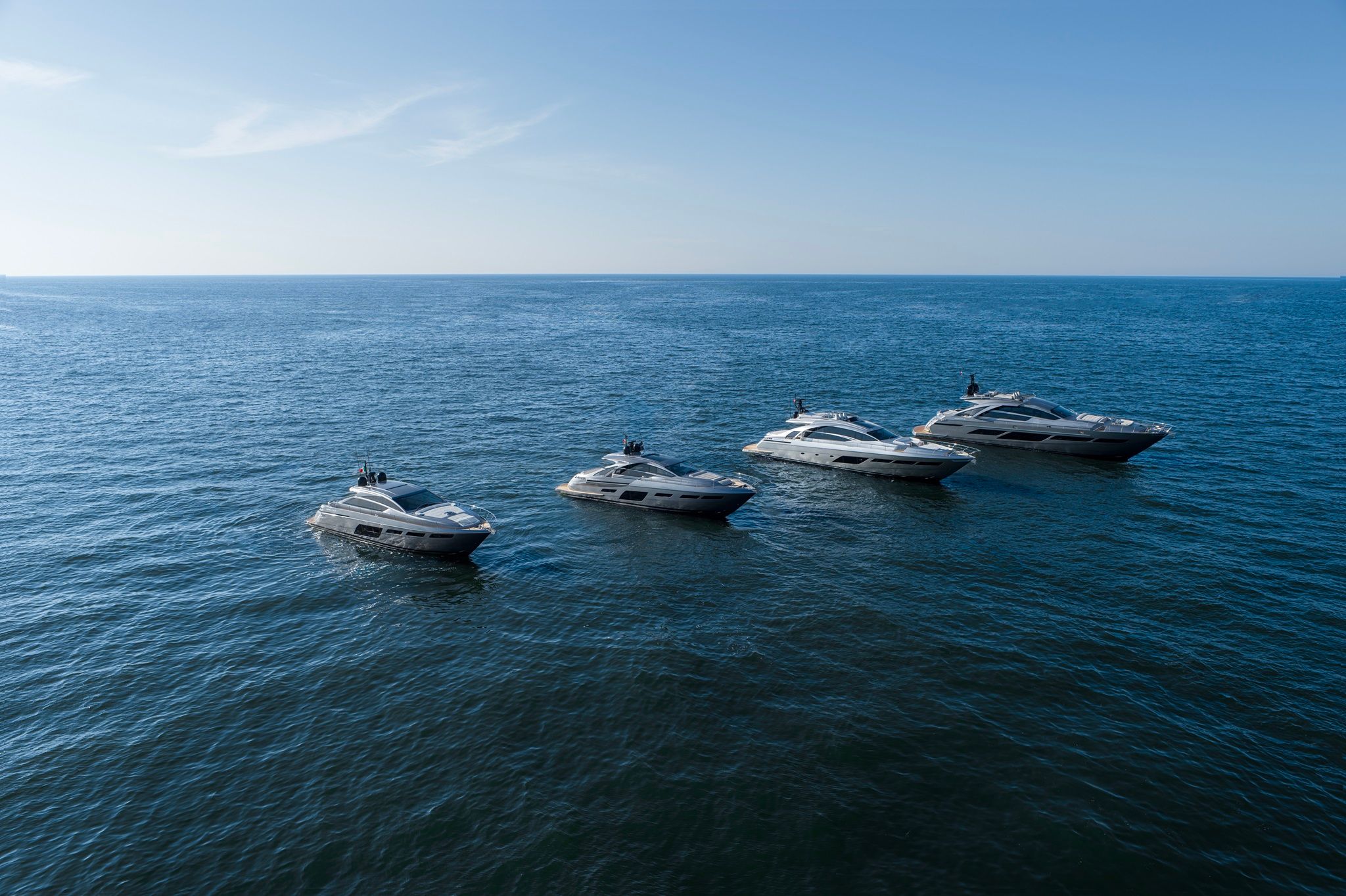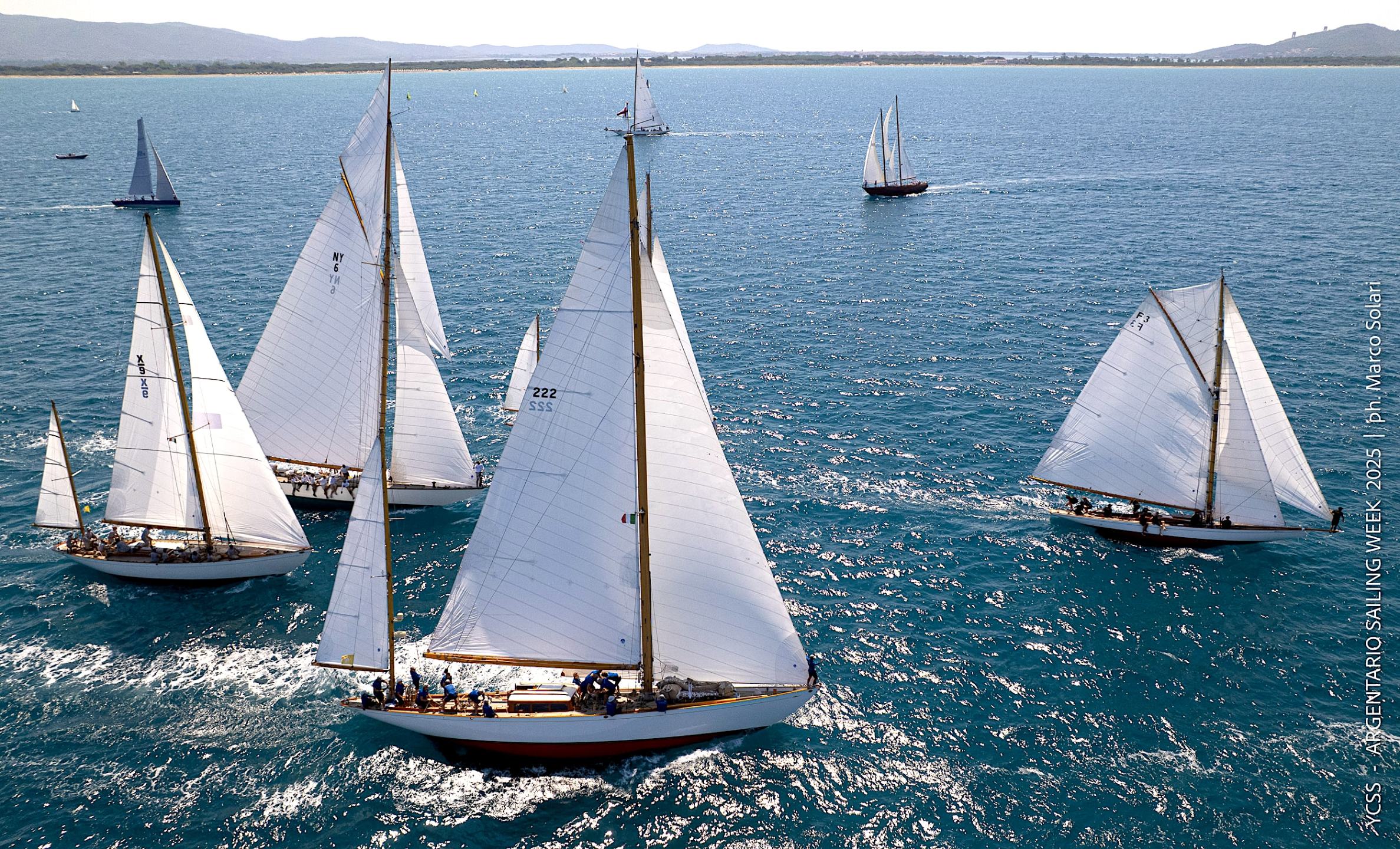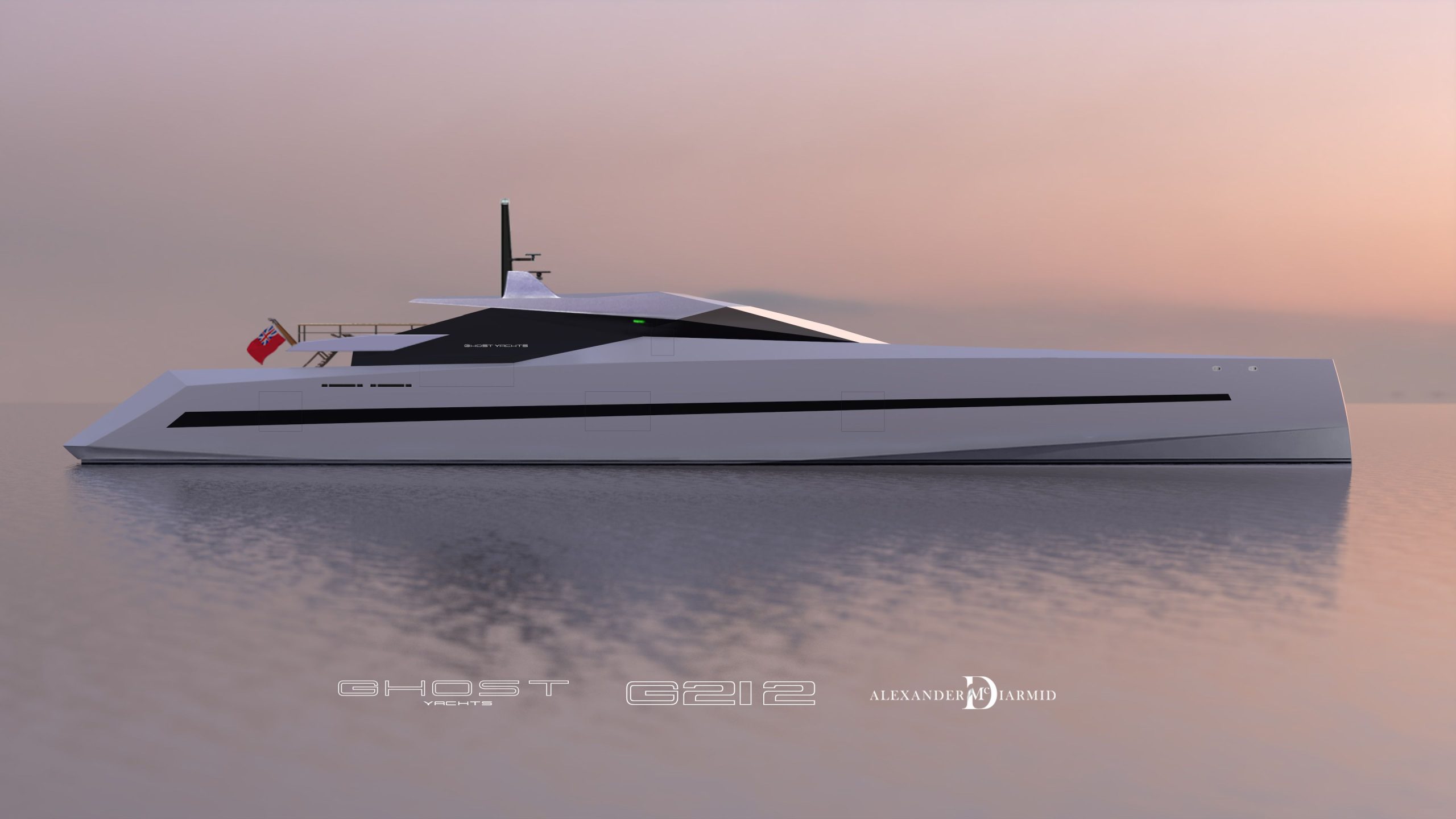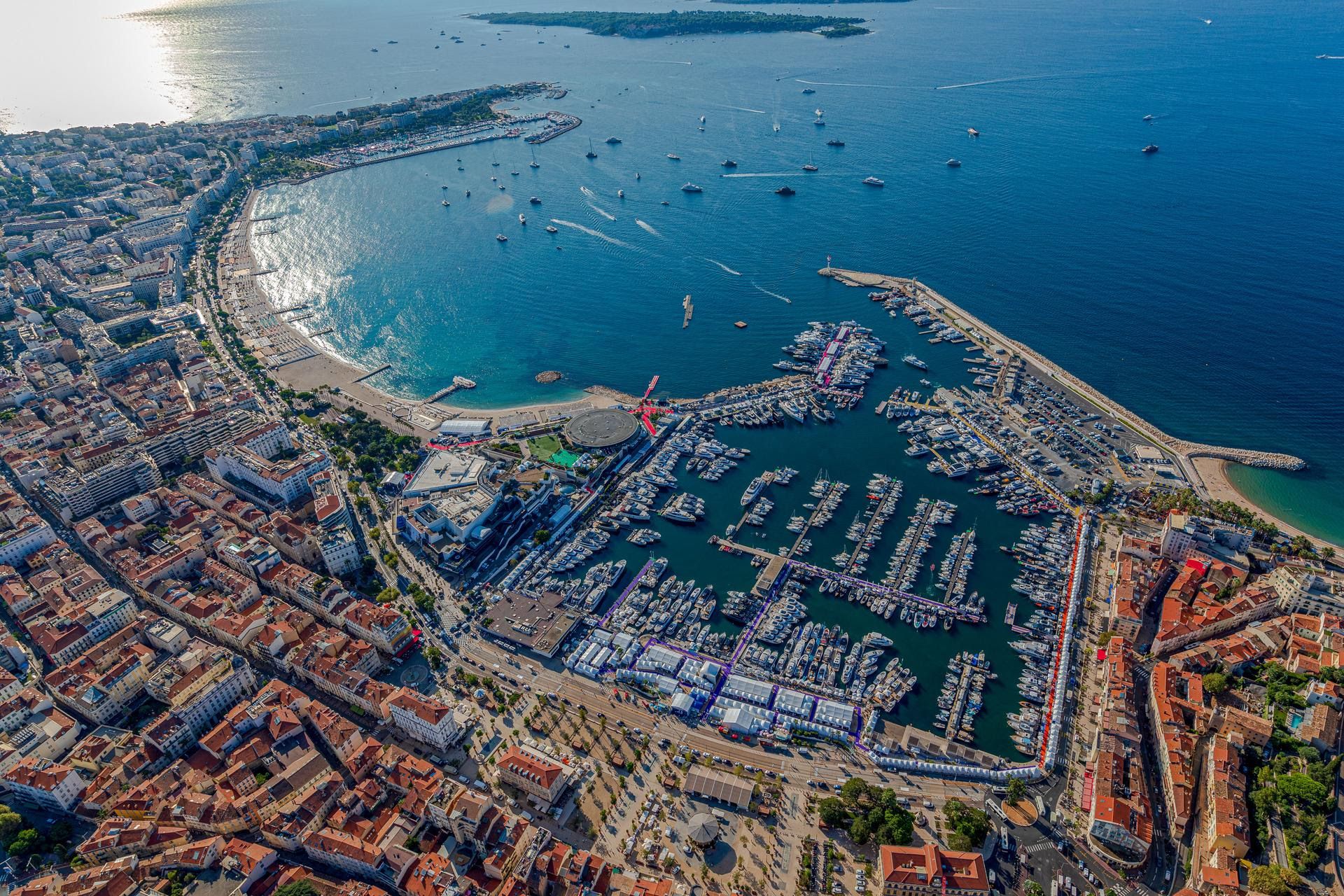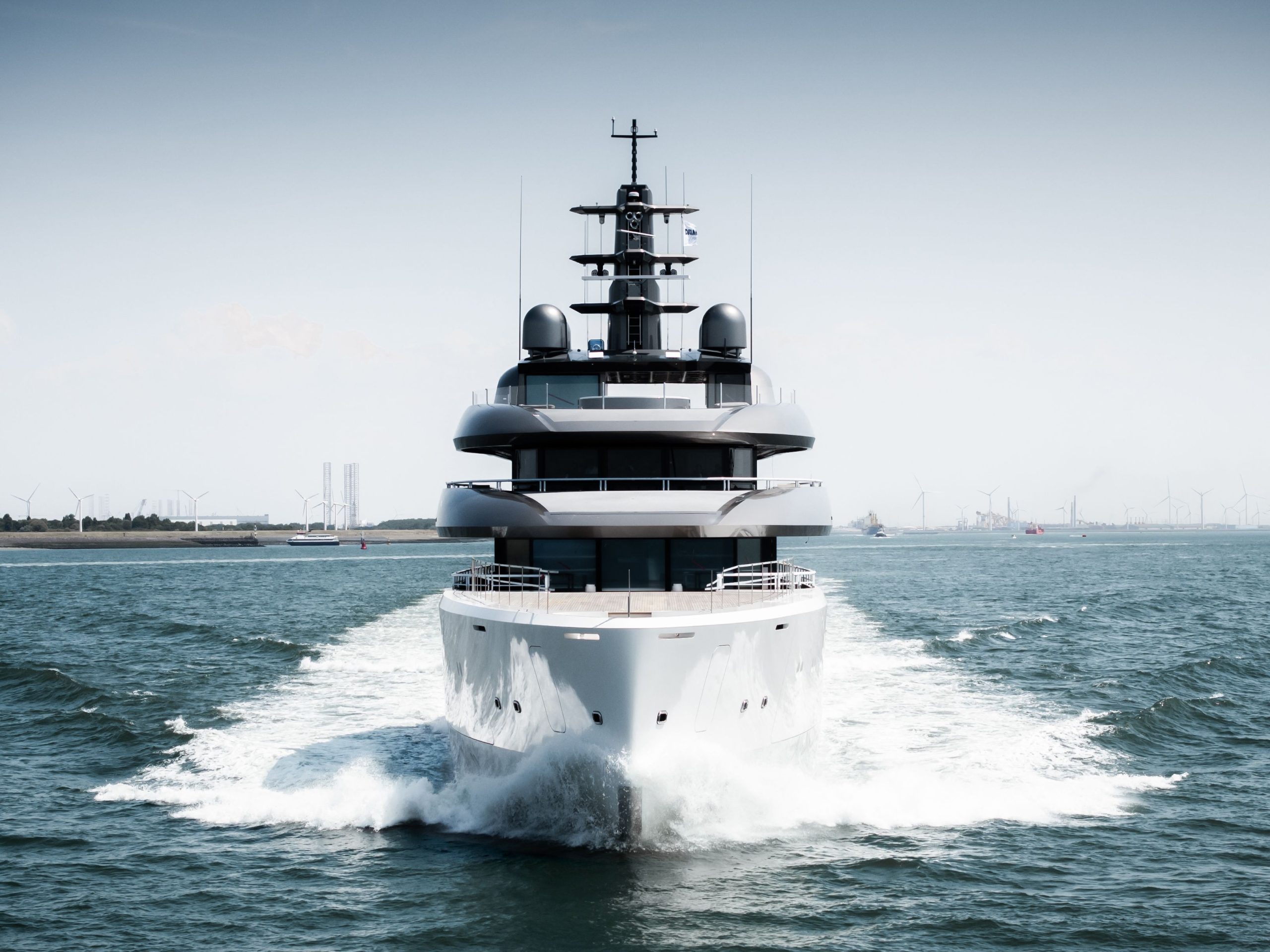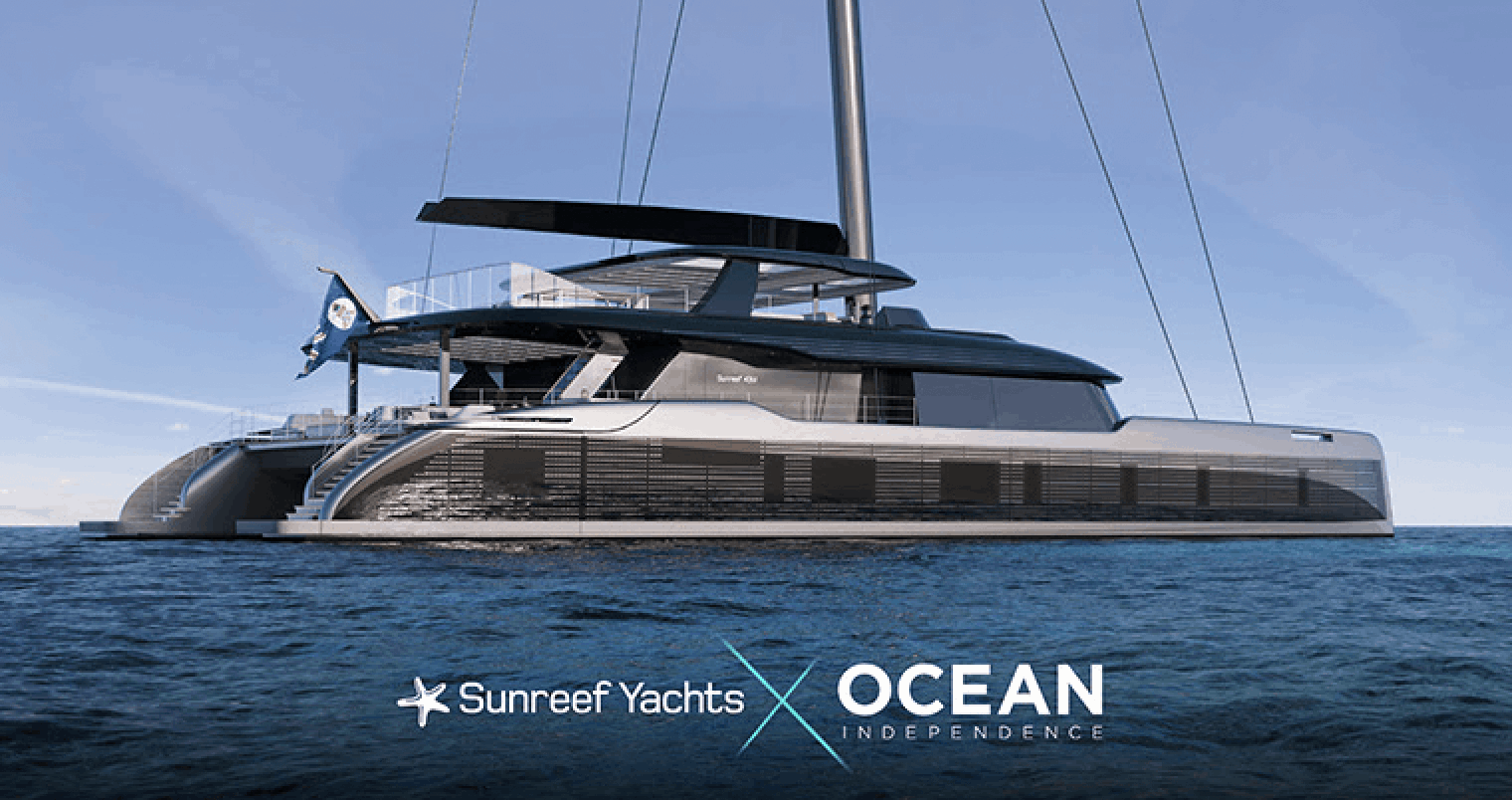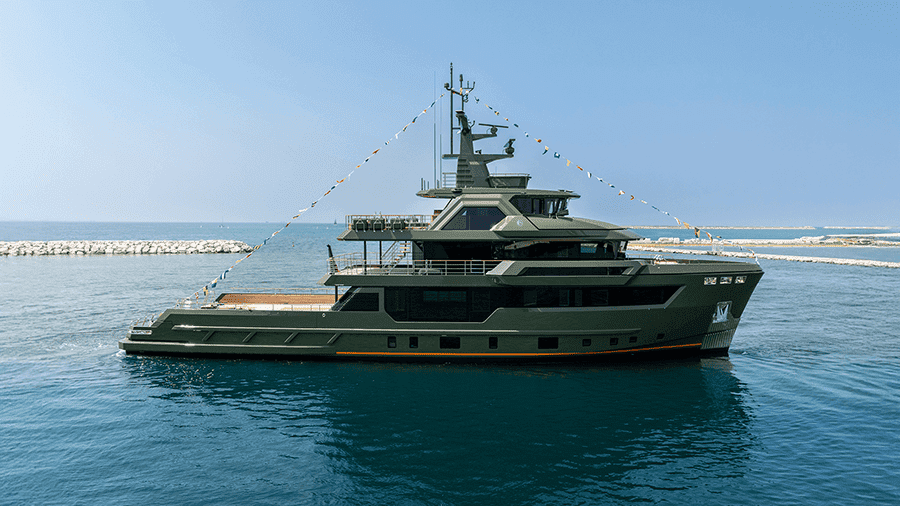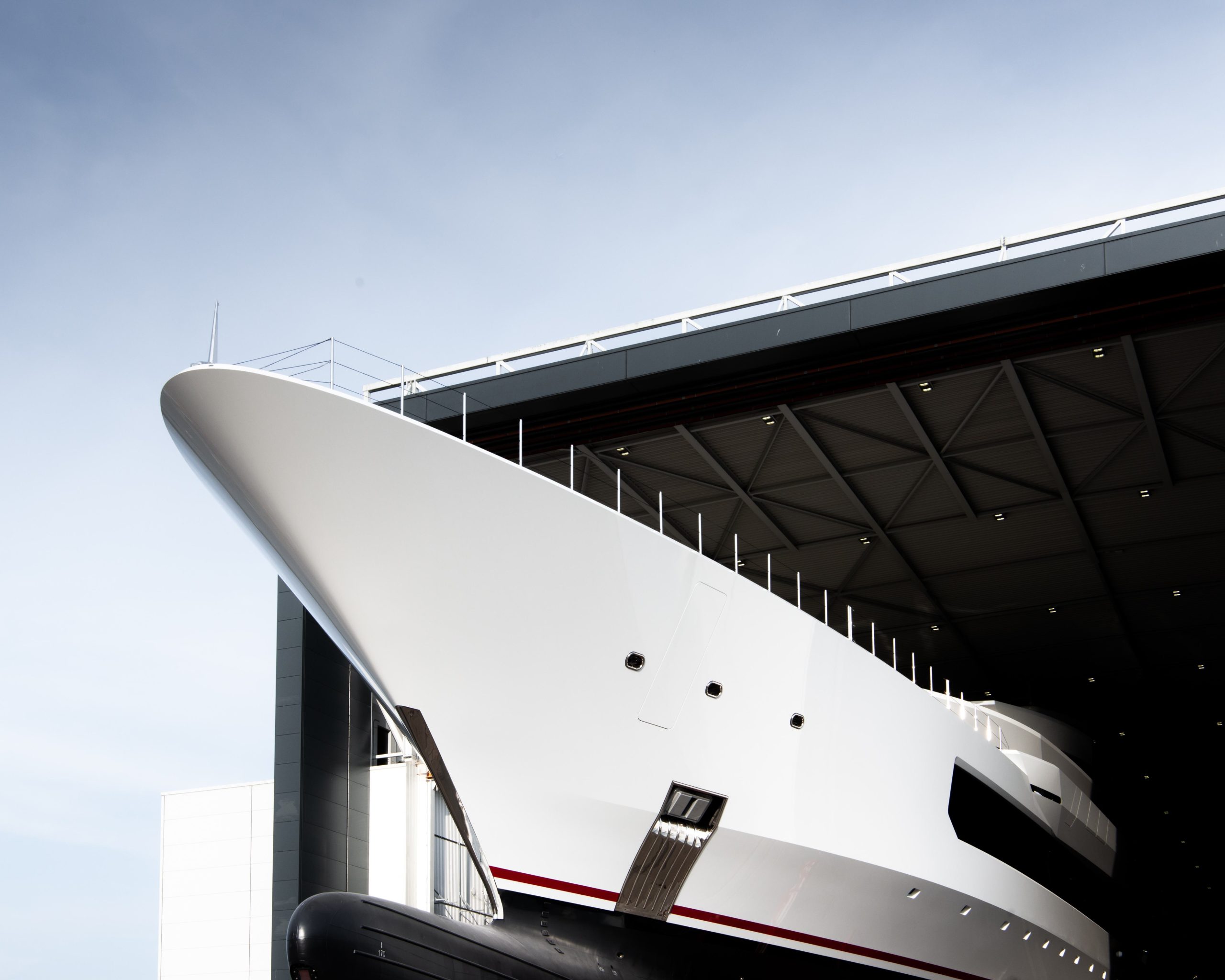Dedication to innovation
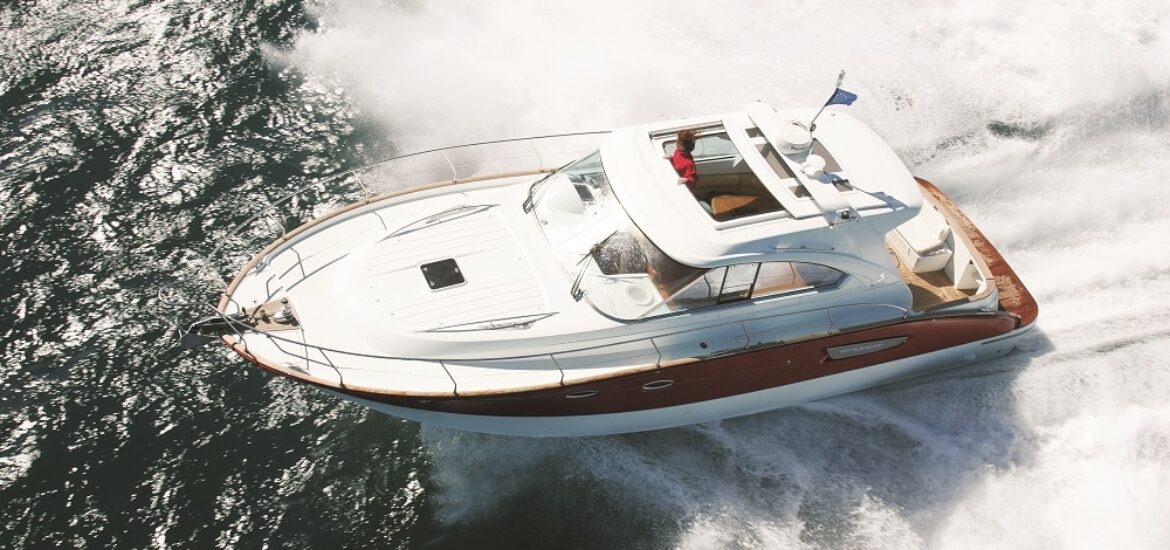
Dedication to innovation
An innovation like Volvo Penta IPS comes along once in a lifetime, and Beneteau didn’t waste a second in getting on board with the new propulsion system after learning about it in 2004, the year before it was unveiled at the London Boat Show. Laurent Fabre, now president of Beneteau America, was working as head of powerboat product development at Beneteau when Volvo Penta approached the company about a revolutionary new propulsion system it was developing. “Beneteau has a reputation for leading by innovation, so we were very interested in what this new system was all about,” Fabre says.
At the time, Beneteau was developing its own ground-breaking hull, the Air Step®, and redesigning its Flyer 12 and Antares 12 motorboats. Volvo Penta told Beneteau that the system would be best suited to a 12- to 14-meter boat but also cautioned that the new system would require a completely redesigned hull. “It was perfect timing,” Fabre says, “and a good opportunity for us.”
Beneteau was invited to visit Gothenburg to test drive a prototype installed with Volvo Penta IPS. “We thought it would be something interesting — but we had no idea it would be this radical,” Fabre says.
The new propulsion concept completely turned boating on its head. With its forward-facing, counter-rotating propellers, which work in undisturbed water, thrust is parallel with the hull — meaning that all power drives the boat forward, rather than having to counteract asymmetric thrust. The Duoprop system halves power input per propeller, all but eliminating cavitation.
Volvo Penta and Beneteau worked closely together, designing a hull especially for Volvo Penta IPS in the Flyer 12 and its counterpart, the flybridge model Antares 12. “That was — and remains to this day — a massive benefit for us,” Fabre explains. “We had to invest a lot of time and capital into building a new IPS-specific hull, but we learned so much from working with Volvo Penta. The knowledge we gained is something a lot of other boat builders are still trying to catch up with. We also considerably strengthened our relationship with Volvo Penta, particularly with regards to design and product development.”
The benefits
Even with boat builders quick to get on board with the new innovation, Volvo Penta IPS was still largely an unknown commodity immediately following its launch at the London Boat Show in January 2005 — no one yet knew how customers would react or how extensive the technical benefits would be.
For Beneteau certain benefits were abundantly clear from Day 1. “For one thing, during test drives, it was evident how much Volvo Penta IPS cut down on noise and vibrations — that’s a crucial factor for new boaters in particular,” Fabre says.
The location of the engines, toward the aft of the boat rather than near the middle, was another revolutionary move that allowed Beneteau to increase cabin space in the Flyer 12 by 33%. Beneteau used the extra room to install a comfortable second cabin and to create a master cabin for the first time. “The living space is what customers pay for; so much room is wasted with shaft-drive engines,” he notes.
“With Volvo Penta IPS, we already had so many highly desirable features for customers. It was only later that we also confirmed how much better it performs.”
Beneteau and its customers quickly discovered the difference between stern drive propulsion and Volvo Penta IPS. The combination of a hydrodynamic hull and the forward-facing Volvo Penta IPS can provide boaters with up to 40% more time on the water, while efficient engine power can cut fuel consumption by as much as 30%. Emissions are also reduced by 30% — and smoke and fumes are lowered along with them. Positioned well under the hull, where there is no risk of air intrusion and cavitation, propellers get maximum active area for better grip and maneuvering — raising top speeds by 20% compared with inboard shafts.
The unveiling
Beneteau unveiled the Flyer 12 at the Dusseldorf Boat Show in 2006 — one of the first boat builders to take the IPS concept to market. There, the new system attracted a lot of attention. “Everyone wanted to see those propellers,” Fabre says. But as Dusseldorf isn’t an in-water show, prospective customers couldn’t try out the boat until later. Once they did, the joystick — which can be used when docking to move the boat forward, backward or even sideways — was the primary selling point. “The joystick in and of itself was a revolution,” Fabre comments.
Beneteau continues to return to the Volvo Penta IPS concept time and again, launching the new Gran Turismo 46 with Volvo Penta IPS (with traditional stern drive offered as an option) at Miami Boat Show 2015 in February. The Volvo Penta IPS-equipped Beneteau Gran Turismo, 49 Fly and Swift Trawler 50 will be shown at the Cannes Boat Show, September 8-13, at stand QML172.
Then visit Volvo Penta at stand JETEE147 to learn more about the innovation that started it all. Volvo Penta’s D13 and IPS3 engines will be on display, and visitors to the stand can also try out the revolutionary Glass Cockpit dashboard and the Volvo Penta IPS touch screen.












